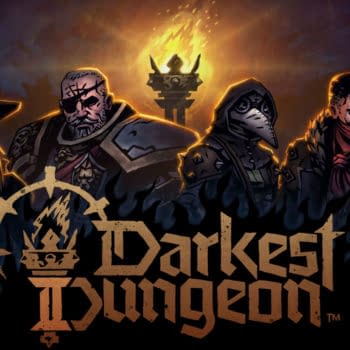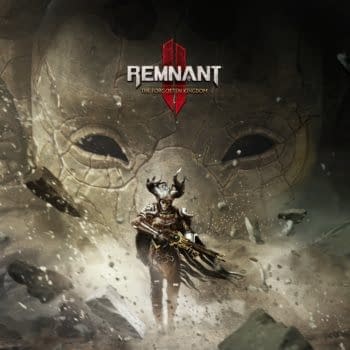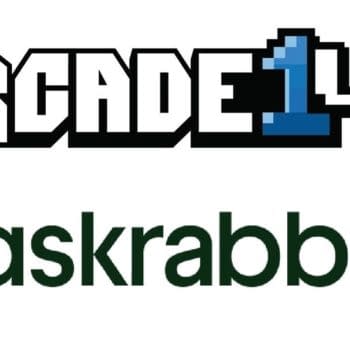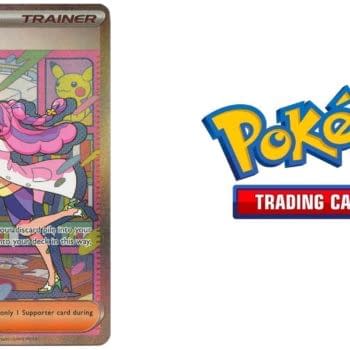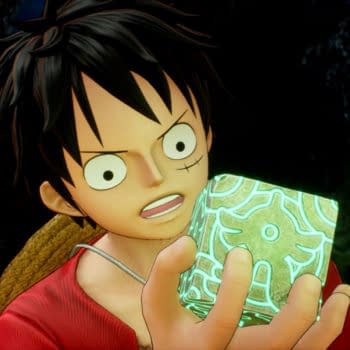Posted in: Games | Tagged: Josh Sawyer, Obsidian Entertainment, Pillars of Eternity, Pillars of Eternity II, Pillars of Eternity II Deadfire
Inside Pillars Of Eternity II: Deadfire With Game Director Josh Sawyer

I got a chance to talk with Josh Sawyer, Game Director and Narrative Lead for Pillars of Eternity II: Deadfire, about some of the changes we can expect to see out of the sequel and a little bit about a future stretch goal for the project's Fig campaign you may remember me posting about last week. While he did remain quiet on what exactly the future goal will be, he mentioned that one he's looking forward to is the replacement for the Stronghold from the original Pillars.

MR: I'll start of with the basics. Pillars of Eternity II: Deadfire, why name it that?
JS: Because its an awesome name. With Pillars I we had already established old Vailian, Aedyr, and all of these other places. And one of the places we came up with was this chain of mostly dormant volcanoes on this vast archipelago named Deadfire. And that just sounded cool. And when we were talking about making a sequel we talked about places to set it. Because Pillars of Eternity was set in a very traditional fantasy zone, European style kind of temperate forests, we wanted to move it somewhere that was a little less familiar in terms of fantasy so we talked about living lands and tons of other places, but then Deadfire seemed to be a really cool choice because it promises pirates and sea monsters and, you know, Polynesian architecture and language and things like that. So the region sounded very appealing and I always thought the name sounded pretty cool. So that's what we went with.
MR: Very cool, so moving on from the sort of European-centric RPG environment and going to more of a world-inclusive one, what else have you guys included in Pillars of Eternity II that we should be looking for? Things that might not have been in the first one?
JS: Well, in terms of story and setting things, we do want to have continuity with the first game. So, for example, cultures like the Vailian Republic or Rauatai are still present here but they're present as colonial powers. Something we tried to introduce in Pillars of Eternity was – instead of making it be set during a quasi-medieval period its set in a early renaissance period. So we're getting into the age of exploration and colonization and the expansion of imperialist powers. The Dyrwood has already been colonized and that was the setting for Pillars I, but Deadfire is currently being colonized and sort of imperialist forces are moving in and either trying to set up their own colonies or set up their own deals with the native cultures for you know wether its shipping rights or access to resources or various things. So we're trying to highlight social conflicts that you don't always necessarily see in most fantasy settings. At least, that's from a sort of story and setting perspective. Or were you asking more about features and things like that?
MR: Both work. Story and setting is always good to know. Including more real-world things like the effects of imperialism is good to see in games. Maybe its just me but I like that sort of thing. As for features to watch out for, is there anything you guys find particularly telling about Deadfire?
JS: I think that, what people notice right away looking at the game is how much better it looks than Pillars of Eternity I. With Pillars I we were trying to get back to a style of game visually that we had not needed in a long time and that most people weren't making games of that style – which is environments that are 2D rendered out with 3D characters on top of it. Most games these days are either purely 2D or more often they're just completely 3D. And we loved working with 2D backgrounds back at Black Isle because I worked on the original Icewind Dale and Icewind Dale II and you can get a really high level of quality in those 2D renders and we also loved painting over those backgrounds to bring out a lot of cool, little, tiny details that you normally just can't get from a 3D environment. So we've improved the lighting a great deal, we've improved the quality of our character models, we've introduced a lot of dynamic elements including dynamic weather and dynamic foliage. They really make the levels feel much more alive. We got a lot of feedback from players that, they thought the levels were very pretty but that they were very static. So we're hoping that a lot of these new features really make those levels feel much more beautiful and much more contemporary. They don't look like higher res versions of the maps that we made 15 years ago. And then in terms of new features, since the game is funded we are now committing to doing multi-classing. Which is a big deal. In Pillars I you could just, whatever your character class was, that's what you would advance as. In Pillars II, you have the option of taking an additional class and advancing that in parallel, or separately – you can go back and forth – it opens up a lot of new character build opportunities which I think is very, very cool. I'm trying to think of other major things to sort of think about for a second. Oh, subclasses. Oh yeah, that's another big thing. So, in Baldur's Gate II a thing that they introduced was – they didn't obviously want to expand on the base class list a great deal so they had kits, and kits were things like "the berserker" or "the inquisitor" or "the assassin," things like that which are a specialization or a focus of an individual class. So, we hit our funding goal for subclasses meaning we're going to be introducing two subclasses for each base class. And those are another way that players can kind of focus on a particular aspect of a character class. And a lot of people really like the idea of specializing and having that very specific type of character in mind. So subclasses will hopefully allow people to get more of that in their character, more of a specialist.
MR: More of a chose-your-own character build rather than a 'you chose one of the five options and roll with it.'
JS: Yeah.

MR: Very interesting. So it's mostly being funded by fans but are you looking to draw in a larger base of players with Pillars II?
JS: Yeah. So Fig- I mean, one of the reasons we're using Fig is because it offers the opportunity for investment to the backers who of course, we love our backers. We say this as many times as we can, we love our backers, we wouldn't have been able to make Pillars I without them, we woudn't be able to make Pillars II without them. The opportunity for investors to contribute is also very cool. And we do want to increase – we want Pillars II to be a bigger success than Pillars I. So we do want new players to come into this. We do want them to fall in love with this type of game. In a lot of cases that means that, we need to tutorialize things better. We're looking at ways to introduce certain mechanics more clearly to people. A lot of people who came to Pillars never having played the Infinity Engine games were hit kind of hard by the difficulty curve. So by no means do we want to make the game less tactically challenging. In some ways we're actually making it significantly more tactically challenging. And we're hoping that what we've learned from Pillars I will allow new players to come into the experience a little more gradually and understand things a little more progressively.
MR: So will that also work in some of the way the story unfolds, to allow players to jump in with Pillars II without having to go back and re-read the Pillars of Eternity Wikipedia summary?
JS: Yeah, the beginning of the game is going to be- it's always a big focus for us. My philosophy on the beginning of the game is to always work on it toward the end of the game. So, when you develop the first area of the game first, you wind up remaking that area 3-5 times. That's not an exaggeration. Because, as you go along you realize 'ugh damnit, we didn't talk about this' or 'aw crap, that's not – that's not even a thing anymore' or like 'uh- we got rid of that mechanic' or 'we added this mechanic.' So we usually handle the beginning of the game later in development but its an ongoing thing where we talk about how are we going to set up new players so that we can catch them up to speed we can catch them up on all the crazy lore that went through Pillars I. Also, we don't want to bore players who know every little bit and piece of the first game and want to just sort of skip over that stuff and get into the game. One thing that we're doing that I really hope people appreciate and that I love from another recent game that Obsidian made which is called Tyranny. In Tyranny they introduced this feature which is this sort of lore highlight. So in dialogue sometimes people will mention a term and instead of explaining it in some sort of very verbose fashion, especially if its something that's already been discussed before, you could just highlight it and you get a little pop-up that tells you exactly what that thing is. Whether its, you know, a little bit of background on the god, or a culture that you might only be a little familiar with, or in some cases, if something that's happening in the world as a reaction to a choice that you made earlier, that highlight system allows the game to call it out without the player having to be sort of like stopped in the flow of the middle of their conversation. So if someone already knows what the Vailian Republics are and that sort of stuff, we don't want to just regurgitate a whole bunch of text. But if someone goes 'uh I think I know what that is' they can just highlight that little bit of text and get a quick pop-up and then return to reading the dialogue.
MR: It's a little bit more intuitive and doesn't really stop things as much as say going into an appendix and reading a whole article on the term you looked up.
JS: We will still have the encyclopedia because we know that a lot of people, they either prefer to learn more that way or some people just like browsing through it rather than reading all the entries. So we'll always have those entries there but the little lore highlighting is just a more elegant way to handle mid-conversation callouts.

MR: Switching tracks, are there any funding goals you guys really want to hit?
JS: All of 'em. One thing is that we want to hit as many of our localization goals as possible. RPGs we find have fans all over the world. We especially, we kind of ordered our stretch goals for localization according to the sort of places that we wind up selling the most units, specific so French and German. We have a ton of fans in France and Germany. RPGs are really strong in those countries and we have a lot of backers in those countries. But, its really cool like, with Pillars I we eventually even got localization versions in Japan and Korea and I think the Japan one was really a fan localization which was really incredible. So when we can hit those goals thats really cool because if we can get good translations of those it just allows a wider audience to experience that stuff. And. I don't want to spoil too much about our upcoming stretch goals but we have some- we have – the things we think are coolest are when we can just make the game better for everyone overall. So there are some new features, for example, we- we're not gonna have the stronghold in Pillars II but we're gonna have something that is taking its place that is very, very cool. And we're gonna be talking and I really hope that basically people get excited about it and that any stretch content associated with that – well, we want to do it and I think that people are gonna get really excited about it.
MR: I get the feeling you aren't going to tell me any more about that. Alright, so I know the games are a spiritual successor to the Baldur's Gate games and Icewind Dale, but are there any other games outside of that history you guys are pulling pieces from?
JS: Yeah, one of our most popular features is something called "scripted interactions" which are these little storybook "choose your own adventure" type sequences. And I was personally inspired to do them by playing 1992's Darklands which is a historical fantasy RPG and its really cool because our game is not super high budget and sometimes we want to do something like swing on a rope across a chasm or something or climb up this craggy cliff and its something where we don't really want to spend the animation budget to do it and most of our interactions are very text based anyway, we use these illustrations combined with text descriptions to paint a picture for the player. The illustrations are very beautiful and the descriptions are really cool and they allow us to do all sorts of interesting one-off kind of things like swimming down a tunnel in a cave or something like that where – how do we even represent that in an isometric game. That would be very difficult. So features like that we've expanded the scripted interactions quite a bit to be honest. The interface is much better. We want to do as many of them as possible because people seem to really, really like doing them. They make the game feel much more like a tabletop roleplaying session where you're doing things more organically according to the skills and abilities people have. So that was a big inspiration. I'm trying to think if we have anything else that's sort of a big inspiration for us. Torment is, for us, of course an inspiration for us. In dialogue we use a lot of prose descriptions and those come from Planescape: Torment. The other Infinity Engine games never did. So we continue to want to explore mature themes like that. So Planescape obviously dealt with some more mature themes, sort of like esoteric thoughts. That's one of the reasons why we felt like some things like reincarnations, and faith, and the gods, and the place of religion in the world. So Torment and Mask of the Betrayer are big influences for those.
MR: Was there anything in particular you focused on improving this time around?
JS: One big focus of mine was involving the story – so one shift in focus is on Pillars of Eternity I, I was the game director and I was also the system lead. And I was the only system designer for most of the project which was a little rough. On Deadfire we now have a new lead systems designer Dave Williams who is really fantastic. And I've shifted my responsibilities more toward narrative lead. And so I'm focusing a lot more on how the story is developed and structured and one of my big areas of attention is to try to make the game much more open for players. I believe that player freedom is extremely important. I want people to be able to play the game the way they want to. I want them to be able to make the alliances they want to make and have those alliances feel really important and meaningful. So if I choose to side with a certain faction and spurn a different faction, that actually changes my experience throughout the game. Also I can choose to go agains everyone and just be this huge psycho, which is something that when I worked on Fallout: New Vegas that's something I worked on emphasizing with John Gonazalez to make sure that the player always has a way to make it through the game and that they don't feel like their choices are going to restrict their ability to change their experience and how the go through. It might become harder but it is their own experience. So the way in which you explore the world is much more open in Deadfire and that also applies to how you develop the story and choose to move toward the end of the game and I think that the way we're developing, there's a much greater focus on that sort of story development and player choice. And that really excites me and I think that players respond very well to it. So I'm looking forward to seeing how people make their way through the story and how their opinions sort of form about the different factions and what the pros and cons are.
Sawyer also confirmed that the game will be run on the Unity 5 engine.
You also may want to check out the project's first backer update:
You can always get in on the action at Fig.co and help fund the campaign.




![[REVIEW] "Gang Beasts" is Zany Party Madness](https://mlpnk72yciwc.i.optimole.com/cqhiHLc.IIZS~2ef73/w:350/h:350/q:75/rt:fill/g:ce/https://bleedingcool.com/wp-content/uploads/2019/09/gang-beasts-7-350x350.jpg)
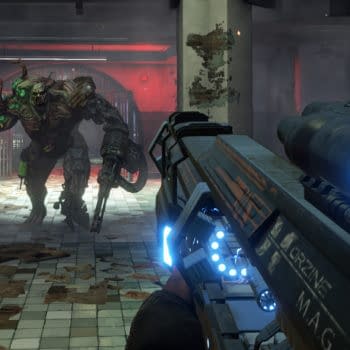
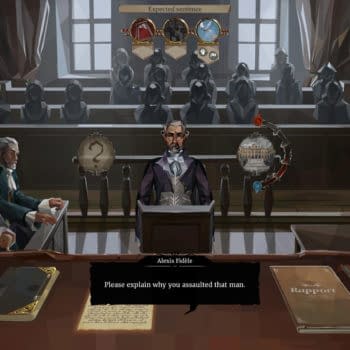
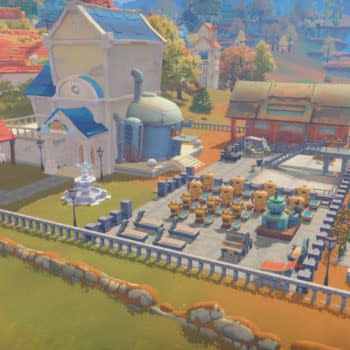
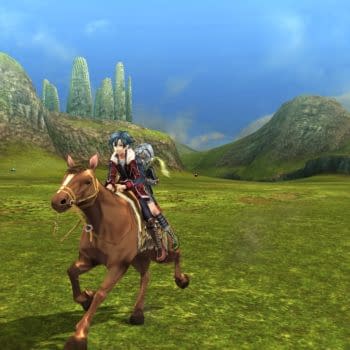
![[REVIEW] "Divinity: Original Sin II" Definitive Edition is Almost Perfect](https://mlpnk72yciwc.i.optimole.com/cqhiHLc.IIZS~2ef73/w:350/h:350/q:75/rt:fill/g:ce/https://bleedingcool.com/wp-content/uploads/2018/08/Divinity-Original-Sin-2-Definitive-Edition-art-350x350.jpg)

